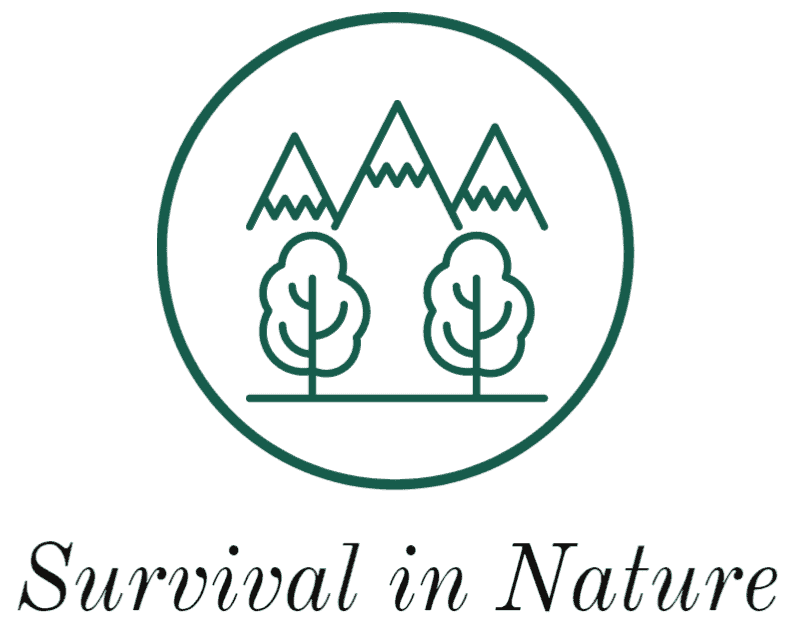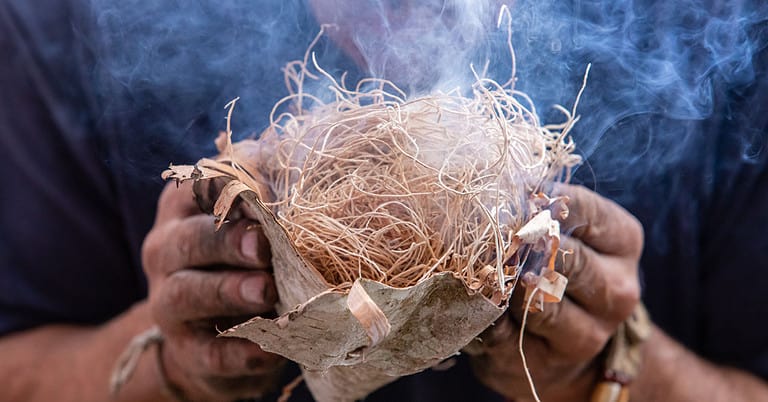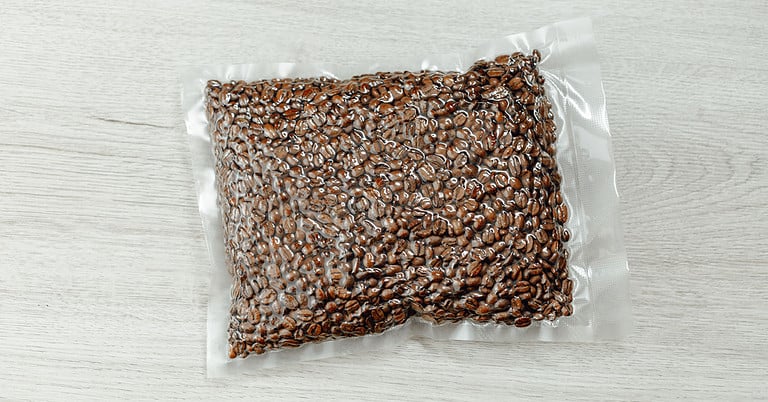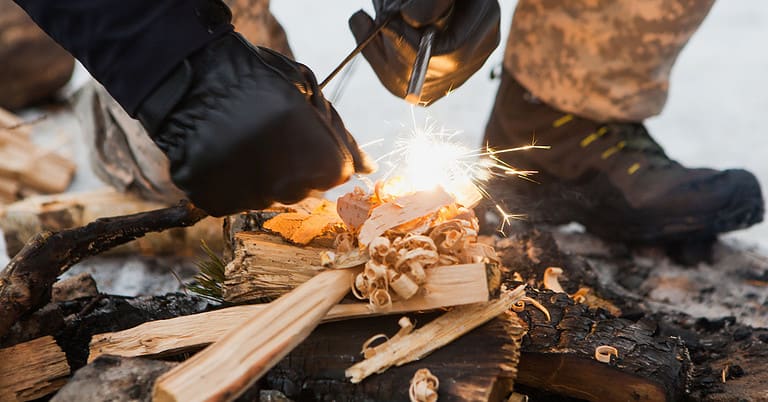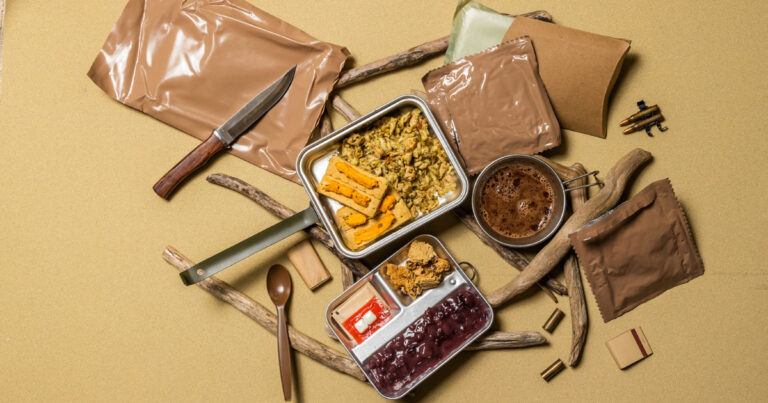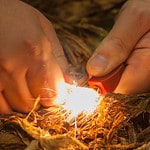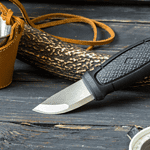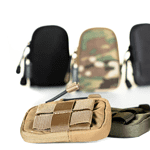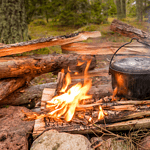A survival gear list is essential for those who enjoy outdoor activities or must prepare for emergencies. This list typically contains shelter, water, food, a first aid kit, navigation aids, communication devices, and tools.
- The shelter should be a lightweight tent or tarp that offers adequate protection from the elements.
- Water can be stored in a portable container, and filtration systems can purify water from natural sources.
- Food items like dry fruits, nuts, and granola bars should be included in the food category.
- Medical supplies like bandages, gauze, and a first aid kit should also be included.
- Navigation can be accomplished using either a map, compass, or GPS.
- Communication tools like a whistle, a mirror for signaling, and two-way radio are invaluable in an emergency.
- Tools like knives, multi-tools, hatchets, fire starters, and flashlights should all be included in your gear list.
While you can customize this list according to personal preference or the intended activity, having everything packed before heading out into the wilderness should be your top priority.
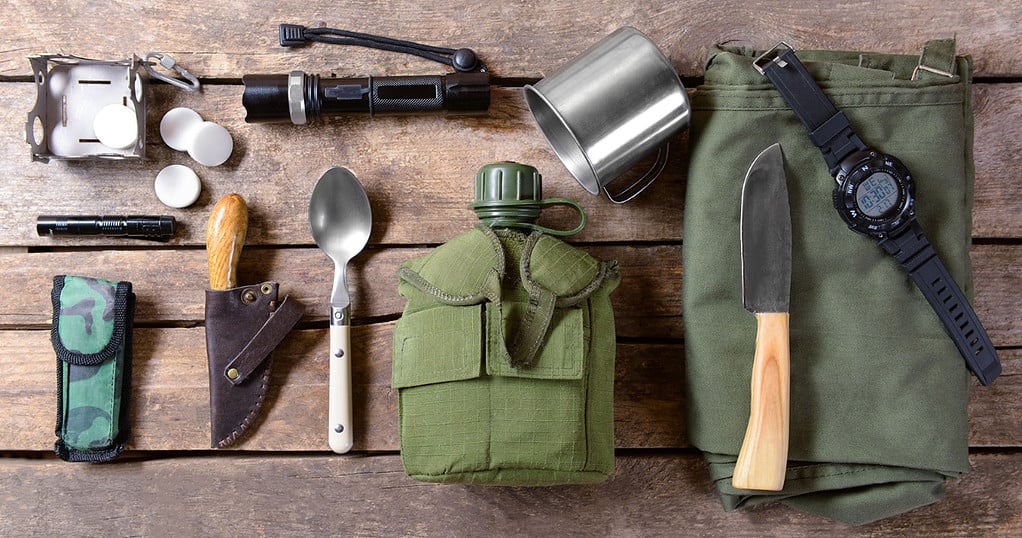
Essential survival items you need to consider
In this list, we will look at some of the critical survival items you might want to consider.
So, whether planning a weekend camping trip or preparing your emergency kit, read on to find out what you need to pack.
1. Water bottle or hydration pack
Regarding outdoor survival, access to clean water is of the utmost importance. That's why water bottles or hydration packs are essential for hikers, campers, and adventurers alike.
Both options provide convenient access while on the go:
However, hydration packs can store larger quantities of liquid and are hands-free.
Water bottles are lightweight and easy to carry; some come equipped with inbuilt filtration systems which remove bacteria, viruses, and other hazardous elements from sources.
Ultimately, which option best meets your personal preference and the specific needs for your adventure will depend on personal preference and which option best meets your needs.
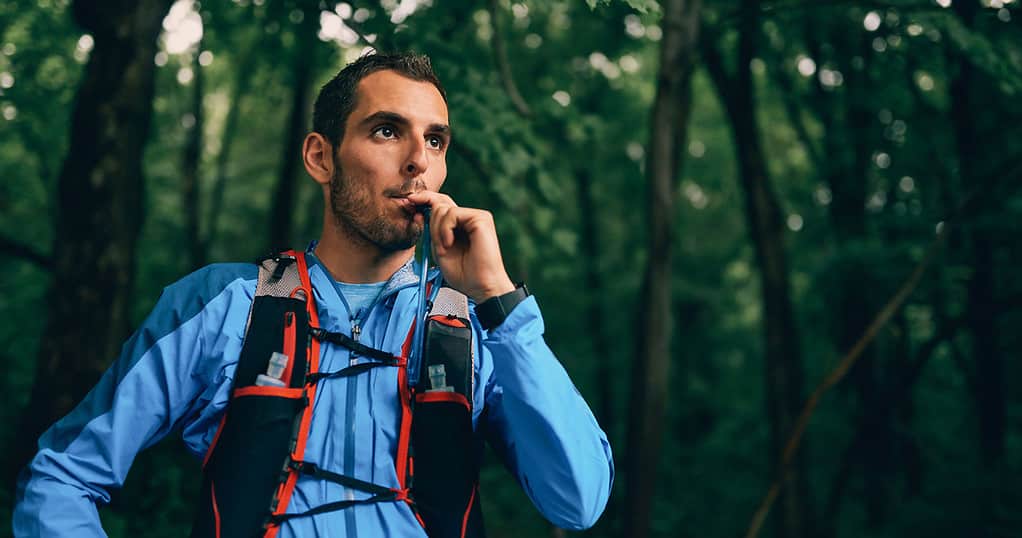
2. Water purifying tablets or filtration system
When it comes to surviving in the wilderness, one of the essential things to have is access to clean drinking water. This is where water-purifying tablets or filtration systems come into play.
Water purifying tablets are small and portable, making them an ideal choice for backpackers and those on the go. They work by releasing chemicals that kill bacteria and other harmful organisms in the water.
On the other hand, water filtration systems use filters to remove impurities and unnecessary particles. They are usually bulkier and require more effort to operate but offer a more efficient way of purifying water in large quantities.
Ultimately, whether to use water-purifying tablets or a filtration system is a matter of personal preference and the situation at hand. However, both options are essential for ensuring access to safe drinking water in survival settings.
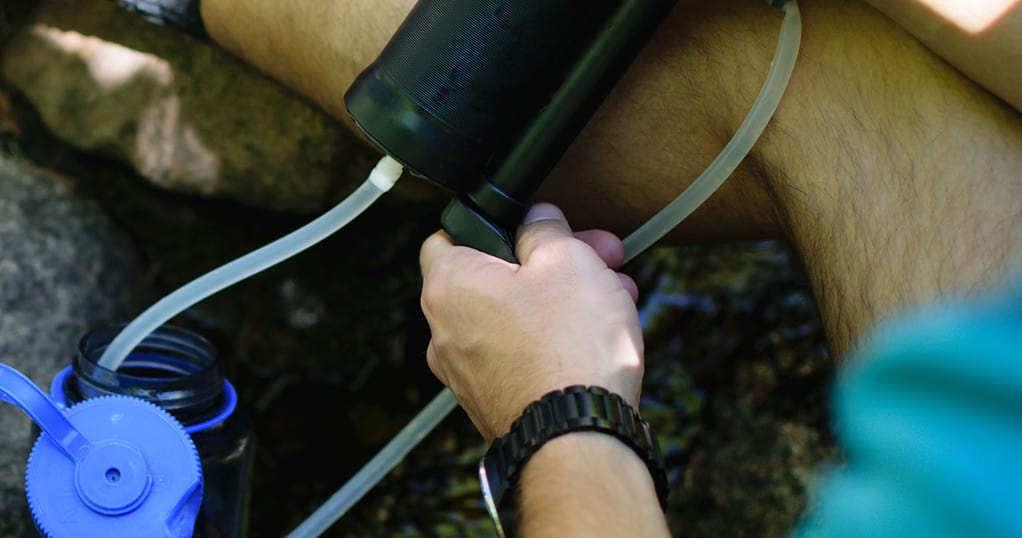
3. Matches or a lighter
Having a dependable fire starter is essential. Matches and a lighter are two popular options for starting a fire.
While the traditional lighter is easy to use and convenient, it also has drawbacks. For one, it is sensitive to weather conditions, and when wet, it is rendered useless.
On the other hand, survival matches are designed to withstand harsh weather and can still ignite when wet. Additionally, survival matches have a longer lifespan than the lighter ones, as they have more games packed in.
Both fire starters have their advantages, and it depends on personal preference and the situation at hand. However, having both in your kit would be the best option, ensuring you have a backup if one fails.
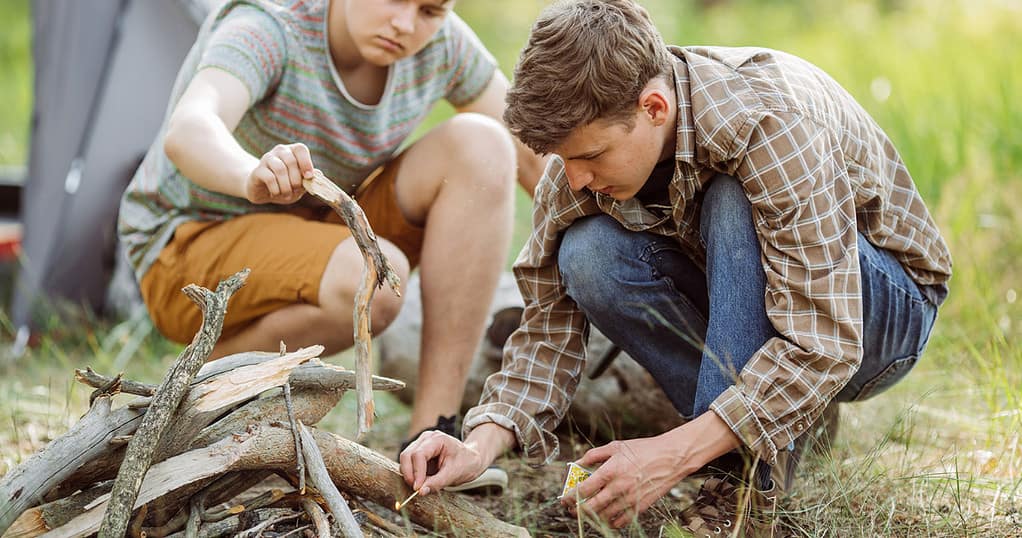
4. Firestarter (such as kindling or magnesium fire starter)
This small, compact device can be a lifesaver in emergencies, where the ability to create fire quickly is crucial.
Fire starters include spark rods, flint, magnesium, and lighters. The most important factor when choosing a fire starter is reliability. The device should be able to function in all weather conditions and provide sufficient sparks or flames to start a fire.
It is also crucial to ensure that the starter is made from high-quality materials that can withstand rough handling and repeated use.
In conclusion, having a reliable and efficient fire starter should be a top priority for outdoor enthusiasts, as it can make all the difference in a survival situation.
- Kindling
Kindling refers to small pieces of dry material, such as twigs, leaves, and small branches used to ignite a fire. You cannot start a fire without kindling, even if you have other fire-starting tools such as matches or lighters.
In a survival situation, finding or making kindling is critical, and you need to know what to look for and how to prepare it for use.
Choosing the right kind of kindling, collecting and preparing it properly, and arranging it correctly can help ensure the success of your fire-starting efforts.
With the proper kindling, you can create a warm, comfortable campsite, cook your meals, boil water for drinking, and signal for help in an emergency.
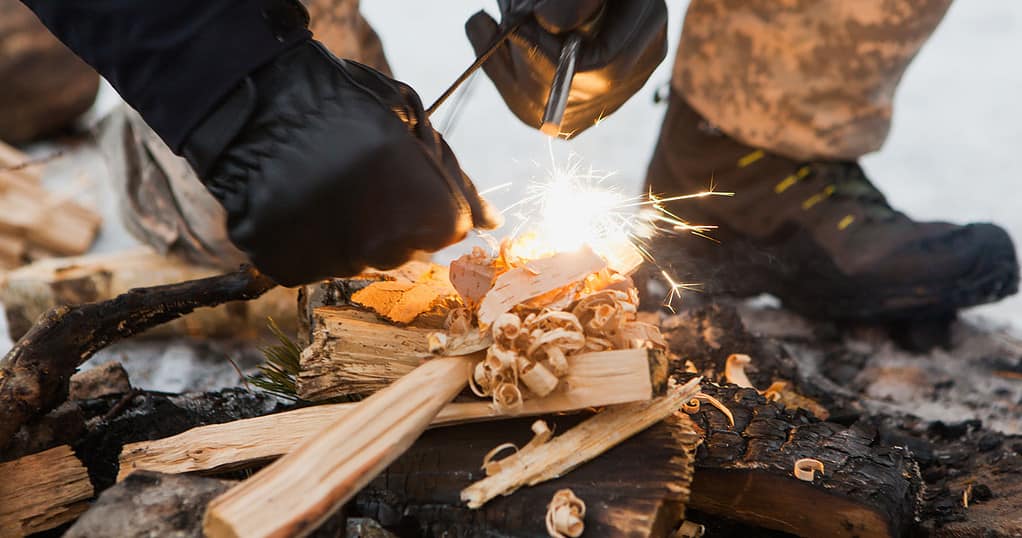
- Magnesium firestarter
It is a must-have for any survival or camping kit. This small but powerful tool can ignite even the wettest materials, making it an indispensable tool for outdoor enthusiasts.
It works by scraping off thin magnesium shavings onto your fire pit and lighting them up with a spark.
Once ignited, the magnesium will burn scorching and bright, quickly setting fire to whatever kindling you've layered on top. The best part is that magnesium shavings can even start a fire in the rain or snow.
Lightweight, compact, and reliable, a magnesium fire starter is essential for anyone who loves to spend time outdoors.
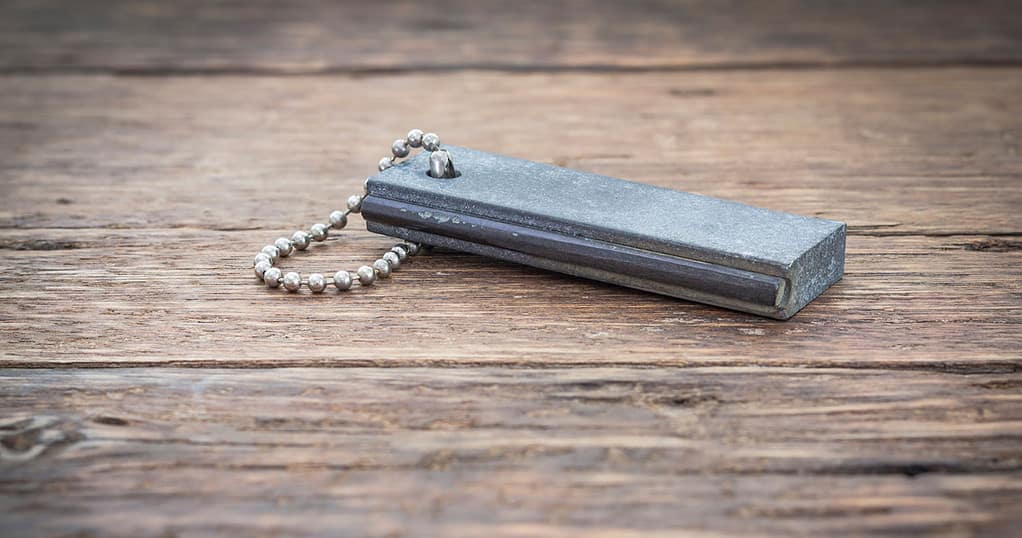
5. First aid kit
Essential items such as bandages, gauze, antiseptic wipes, and pain relievers should be included to treat common injuries.
In addition, the kit should contain items such as a tourniquet, tweezers, scissors, and a thermometer to handle more severe injuries.
When choosing a first aid kit, consider the type of activity you will be participating in and the environment you will be in, and always be sure to keep the equipment adequately stocked and up-to-date.
A well-equipped survival first aid kit can make all the difference in a potentially life-threatening situation.
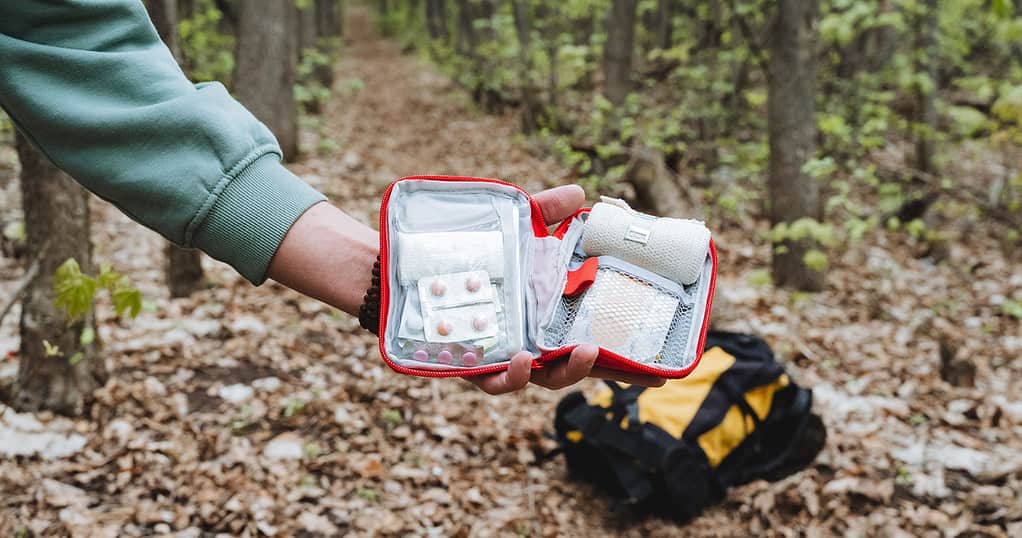
First aid kit items:
- Bandages
Bandages can treat minor cuts, scrapes, or severe wounds requiring immediate attention.
The most common survival bandages are adhesive strips and gauze pads, which can be used to cover a wound and prevent contamination.
They are designed to be highly durable, waterproof, and versatile, making them suitable for use in any environment.
Many survival experts recommend keeping a pack of bandages in your first aid kit, backpack, or car.
Properly using a bandage can mean the difference between life and death in a survival situation.
- Gauze
It is a specialized gauze designed to help stop bleeding quickly and efficiently in emergencies.
Survival gauze is made from a blend of materials that are designed to be highly absorbent and provide excellent wound control.
It is also sterile and pre-packaged, making it easy to use quickly. One of the best aspects of survival gauze is its incredibly lightweight and compact, making it ideal for hikers, campers, and backpackers who must carry it on long treks.
Overall, survival gauze is essential to help save lives in emergencies.
- Antiseptic wipes
These wipes effectively kill germs and bacteria that may cause infections. As a result, they are ideal for cleaning wounds, cuts, and scrapes to prevent them from becoming infected.
Antiseptic wipes can be used without clean water and soap to clean our hands and maintain hygiene.
They come in handy during outdoor activities such as hiking, camping, or any adventure in the wilderness.
They are also helpful for keeping our homes and workplaces clean and hygienic.
In conclusion, having antiseptic wipes in your survival kit is a must to stay healthy and free from infections.
- Pain relievers
Pain relievers are essential in emergencies, helping to soothe excruciating pain, provide comfort, and potentially save lives.
Whether from injuries, burns, wounds, or chronic illnesses - the human body can endure intense discomfort that could impair movement or decision-making.
Having painkillers in one's emergency kit can make all the difference. Common survival painkillers include acetaminophen, ibuprofen, aspirin, and naproxen, each with its mechanism of action, potential side effects, and recommended dosages.
Knowing how to take and store these medications for extended shelf life is essential.
Before using any pain-relieving medication in survival situations, it is wise to consult a healthcare expert and read the instructions carefully to avoid unpleasant side effects that could compromise the body's capacity for function during an emergency.
- Tourniquet
A medical device designed to stop bleeding quickly in life-threatening emergencies. It should be essential in every emergency first aid kit, especially for those who enjoy outdoor activities such as camping, hiking, or hunting.
They are convenient and compact, allowing them to be applied quickly on a person's limb to stop arterial bleeding.
The purpose of a tourniquet is to reduce blood loss and keep the victim alive until professional medical assistance can be rendered.
Tourniquets are made of durable materials such as nylon and Velcro to provide a secure fit and stop significant bleeding.
In an emergency, having access to a survival tourniquet could mean the difference between life and death - so you must learn how to apply one correctly.
- Tweezers
These small but efficient instruments can help remove tiny splinters or tick bites that could cause discomfort during survival situations.
Being lightweight and easy to transport makes them ideal for anyone who spends much time outdoors.
Constructed from stainless steel or other rugged materials, these tweezers often feature pointed ends for precise control while using them; their longevity ensures they will last long, even under harsh conditions.
Without question, no survival kit would be complete without one!
- Scissors
They are designed to withstand the harshest conditions and remain sharp even after being subjected to extreme pressure or outdoor elements.
These scissors are made from high-quality stainless steel, making them rust-resistant and durable. They are also designed with several features that make them an ideal tool for survival, such as a serrated edge for cutting through rigid materials like rope or leather and a sharp point for puncturing through materials like fabric or leather.
These scissors are compact and easy to carry, making them a must-have for any survival kit. Whether camping in the wilderness, responding to an emergency or needing a reliable pair of scissors for everyday use, survival scissors are the perfect tool for getting the job done.
- Thermometer
It is an indispensable piece of gear for anyone caught in a survival situation. It helps users measure the temperature of their environment so they can make informed decisions regarding clothing, shelter, food, and water supplies.
A thermometer with a large, easy-to-read display and wide temperature range can assist in assessing any potential dangers due to weather conditions.
An accurate thermometer could mean the difference between life and death in extreme cases, such as freezing temperatures. Therefore, a reliable and compact thermometer that can withstand harsh conditions is essential for anyone venturing into the great outdoors.
Survival thermometers have become essential tools for those who enjoy exploring nature or may encounter unexpected circumstances, making them necessary for those serious about survival.
6. Map and compass
A map and compass are crucial tools for anyone venturing into the wilderness. These two devices work in tandem to help navigate unknown terrain and avoid getting lost.
A map provides an overview of the surrounding area, identifying key landmarks and pathways.
Meanwhile, a compass allows one to determine their direction and ensure they are heading towards their desired destination.
When technology like GPS or smartphones may fail, a map and compass can be relied upon in survival situations.
It is essential to learn how to use these tools properly and carry them when exploring the great outdoors.
With a map and compass, individuals can be confident to trek through remote locations and emerge safely from their adventures.
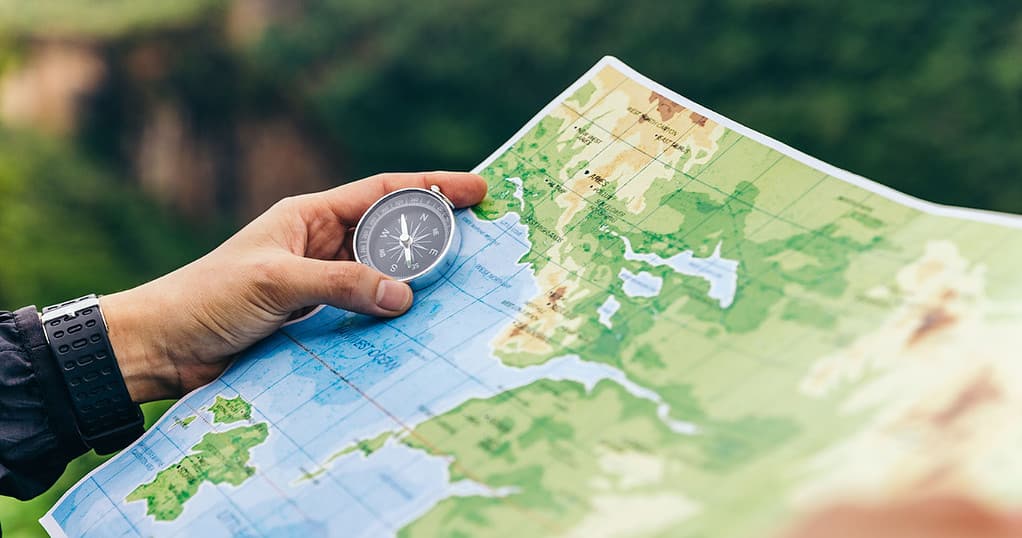
7. Multi-tool or knife
A survival multi-tool or knife typically features a range of highly functional tools to help you overcome any hurdles you may encounter in the great outdoors.
In addition, they are compact, portable, and easy to carry with you on your outdoor adventures.
These tools feature many functions, from a knife to a saw, can openers, tweezers, and pliers.
Whether starting a fire, cutting through rope, repairing gear, or even signaling for help, a reliable multi-tool or knife can make all the difference.
Therefore, having these tools in your arsenal when heading out into nature is crucial, as they can help you survive in even the most challenging of situations.
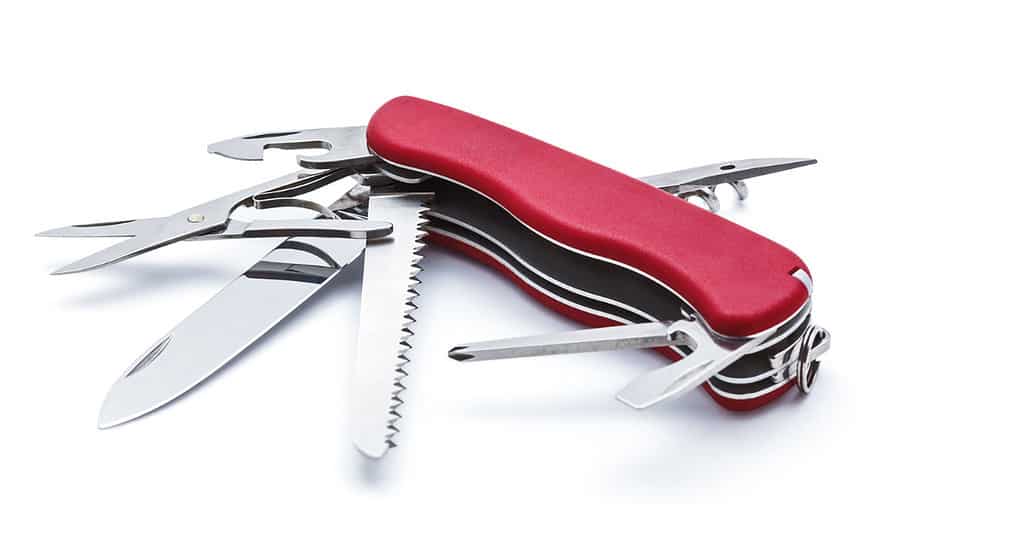
8. Flashlight or headlamp
Having a reliable source of light is crucial. While flashlights and headlamps have advantages, it ultimately comes down to personal preference and specific needs.
- Flashlights are more versatile and powerful, making them better for searching through dark spaces or signaling for help.
- Headlamps provide hands-free lighting and are ideal for more active pursuits like hiking or camping.
In a survival situation, it's essential to have a light source that is efficient, durable, and easy to use. The choice between a flashlight and a headlamp depends on what will best suit your specific situation, activity level, and personal preference.

9. Emergency whistle
An emergency whistle is an invaluable asset during any outdoor adventure. When you find yourself lost, stranded, or injured, an emergency whistle can help attract attention and alert rescuers of your location.
A reliable whistle is constructed of durable materials like metal or plastic, producing a loud, clear sound that can be heard over long distances.
Some whistles even come equipped with a built-in compass, thermometer, or flashlight, increasing their usefulness in emergencies. It is essential to have your whistle accessible at all times, either hanging from a lanyard around your neck or attached to your backpack.
Before embarking on any adventure, create an emergency plan with what to do in case of an emergency; having access to an emergency whistle as part of that strategy could save lives.
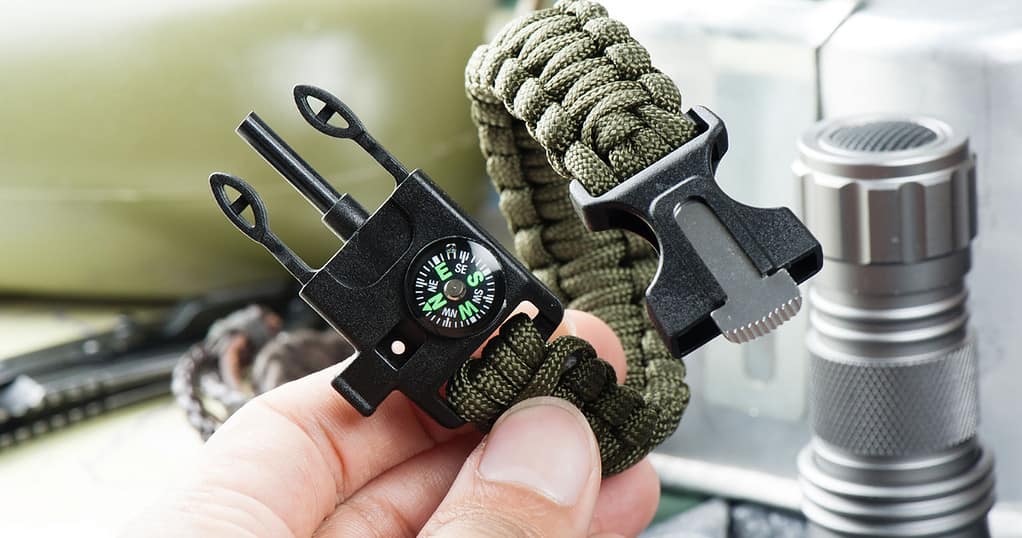
10. Shelter (such as a tent, tarp, or bivy sack)
Shelters are essential tools for nature lovers who like to adventure. Their primary purpose is to shield you from harsh elements while creating a cozy living area.
Tents, tarps, and bivy sacks are three of the most popular survival shelters available today.
- Tents are made of solid fabrics, so tents can be set up quickly without additional tools or materials.
- Tarps are lightweight and easy to transport, making them ideal for hikers and backpackers who prioritize minimizing their load.
- Bivy sacks are the smallest of shelters, making them portable to take with you wherever life takes you.
A reliable shelter will keep you dry and warm even in extreme situations, making it essential equipment for anyone venturing into nature.
- Tent
It is a specially designed shelter that is lightweight, portable, and easy to set up. Made from durable and waterproof materials, a survival tent provides protection from the elements and helps to regulate body temperature.
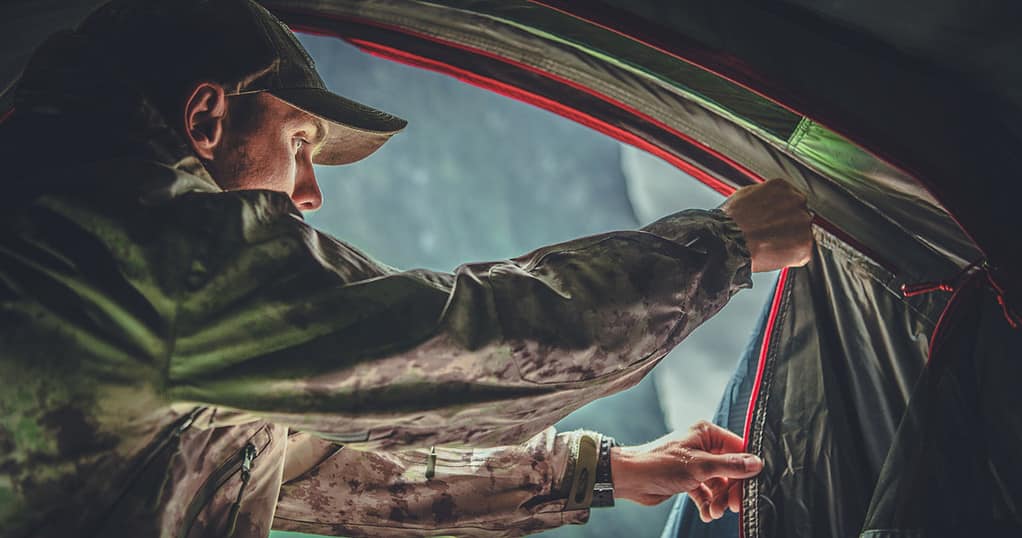
Choosing a tent suitable for the type of climate in which it will be used is essential, with features such as sturdy poles, ventilation windows, zippers, and reinforced stitching.
In a survival situation, a tent can mean the difference between life and death, providing a secure shelter for overnight stays, allowing rest and preservation of strength for the next day's needs.
A quality survival tent is essential to any outdoor gear collection and should be carefully chosen.
- Tarp
Constructed to withstand harsh weather conditions, these tarps serve as temporary shelters that are lightweight, compact, and easy to carry in a backpack.
A tarp's waterproof and multi-purpose properties make it ideal for building shelter, covering gear, and starting a fire. In addition, it is adaptable enough to adapt in any environment as either ground cover, rain fly, or wind barrier.
A survival tarp offers protection from rain, wind, and sun while keeping you dry and warm.
Furthermore, its bright color can signal for help or be an invisible marker in the wilderness, making it an indispensable tool for outdoor survival.
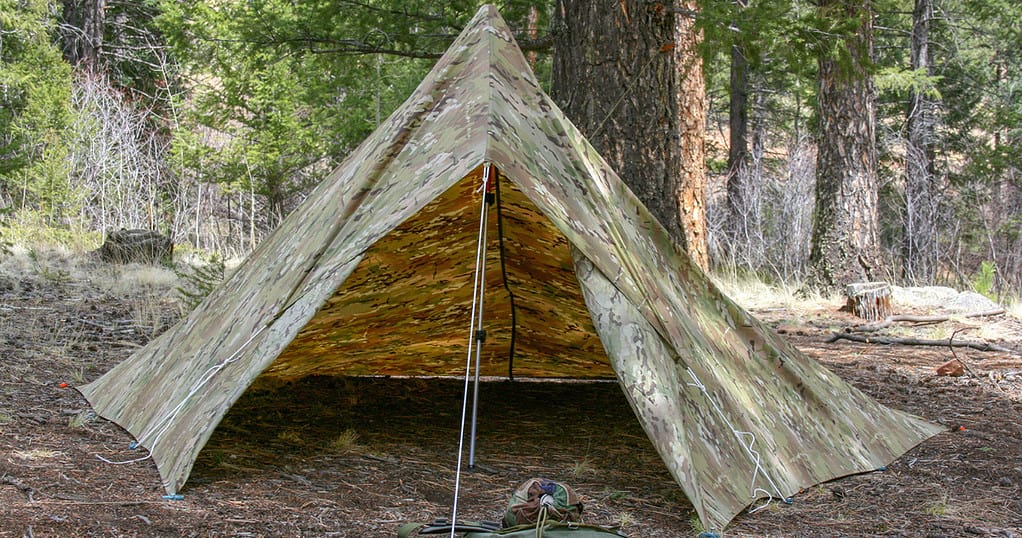
- Bivy sack
A Bivy sack is a compact, lightweight shelter that protects someone from the elements in emergencies. It is designed to trap body heat and reflect it to the user, keeping them warm in cold conditions.
This type of shelter is made of durable, water-resistant materials and is highly portable, making it an ideal option for hikers, campers, and adventurers.
A Bivy sack can be a life-saving tool in the wilderness, allowing for protection from hypothermia and other dangers. It can also be an essential part of a survival kit or bug-out bag, providing a reliable emergency shelter option for those unexpected situations.
Overall, a survival Bivy sack is necessary for anyone who spends time outdoors and values preparedness and safety.
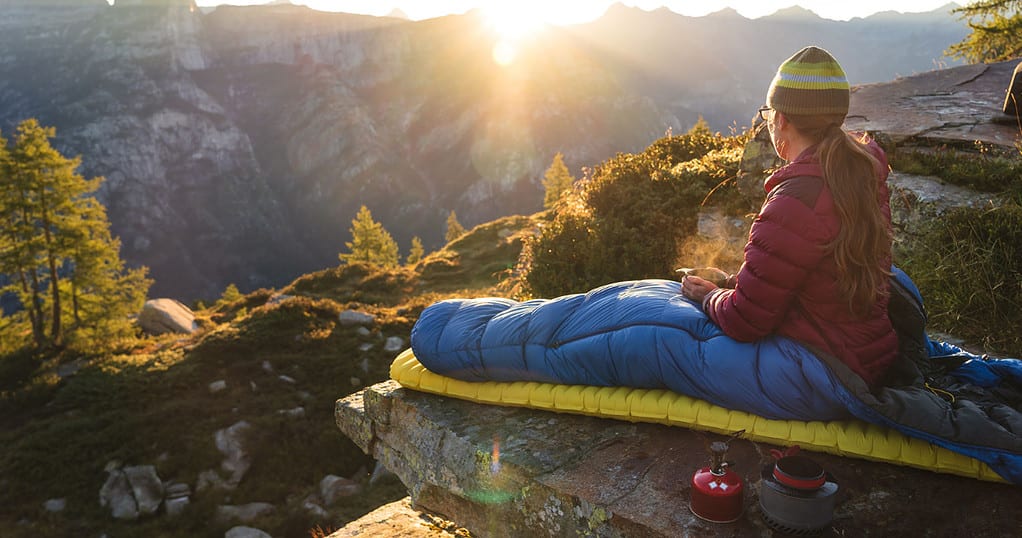
11. Food
Food is an essential element of emergency preparedness. These non-perishable items are stored when access to fresh produce is limited or unavailable.
Survival foods such as:
- Canned goods
- Dried fruits
- Nuts
- Meat
- Freeze-dried meals
These nutritious items provide vital energy and nutrients in times of need - particularly during natural disasters, power outages, or other disruptions.
Food is essential when camping, hiking, or engaging in outdoor activities that could restrict access to new food sources.
It should be stored appropriately and rotated periodically to maintain freshness and prevent spoilage. In addition, stocking up on survival food is essential for anyone anticipating unexpected events that could restrict their food choices.
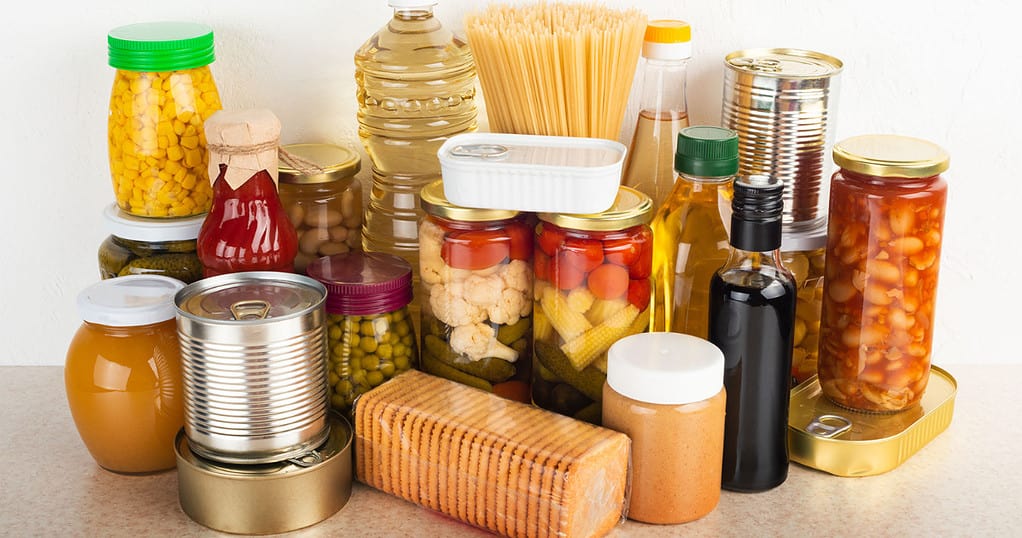
12. Clothing
Survival clothing is a specialty attire designed to protect users against harsh environmental elements in the wilderness. This specialized apparel protects you against adverse weather conditions, animal bites, and scratches, among other potential hazards.
They feature lightweight yet water-resistant materials that allow for ease of movement while outdoors.
Many survival clothing items provide thermal insulation to keep wearers warm in freezing temperatures.
In addition, they're often designed for minimalism and comfort, with pockets for survival equipment storage.
Survival clothing is essential for anyone who spends extended time outdoors. Investing in high-quality survival gear could mean the difference between life and death in specific scenarios.

13. a GPS device
A GPS device is essential for anyone planning to venture into the wilderness. This device is designed to help individuals navigate unfamiliar terrain, find their way back to civilization, and stay safe in emergencies.
Equipped with various features and functionalities, these devices allow hikers, campers, and outdoor enthusiasts to track their movements, assess the surrounding environment, and communicate with rescuers or fellow adventurers.
A GPS device's key features include a rugged build to withstand harsh conditions, long-lasting battery life, real-time location tracking, SOS capabilities, and topographical maps.
With a survival GPS device, outdoor enthusiasts can explore the great outdoors with greater confidence and peace of mind.
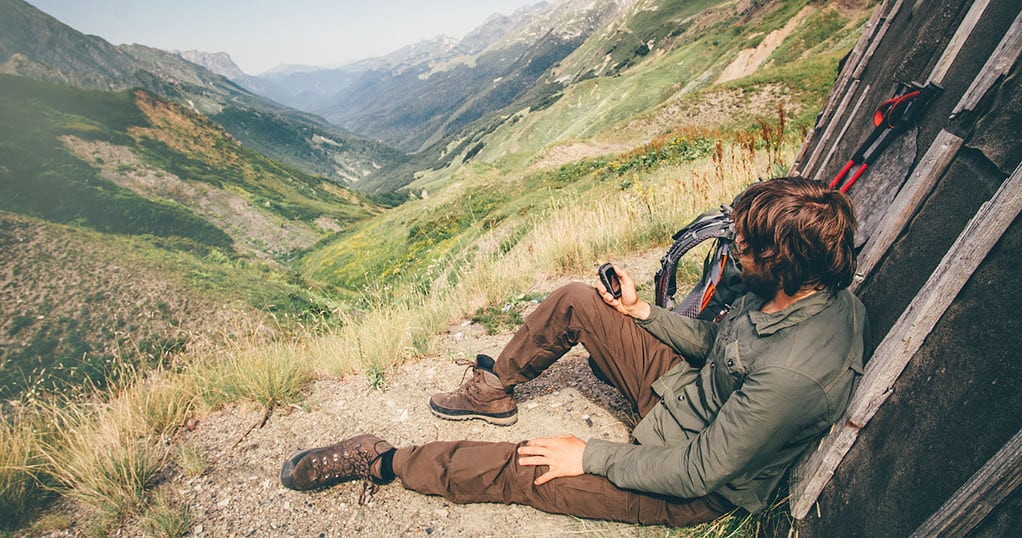
14. solar charger
A solar charger is designed to keep you up even in remote areas or during power outages. These chargers feature built-in solar panels that convert sunlight into electricity, which can be used to charge phones or other electronic devices.
A significant advantage of a survival solar charger is that it doesn't require access to electricity. This means you can set your devices even when you're far away from any power sources.
In addition, some of these chargers are weather-resistant and durable, making them perfect for use outdoors.
Having a survival solar charger as part of your essential gear can make all the difference in staying connected no matter where your adventures take you.
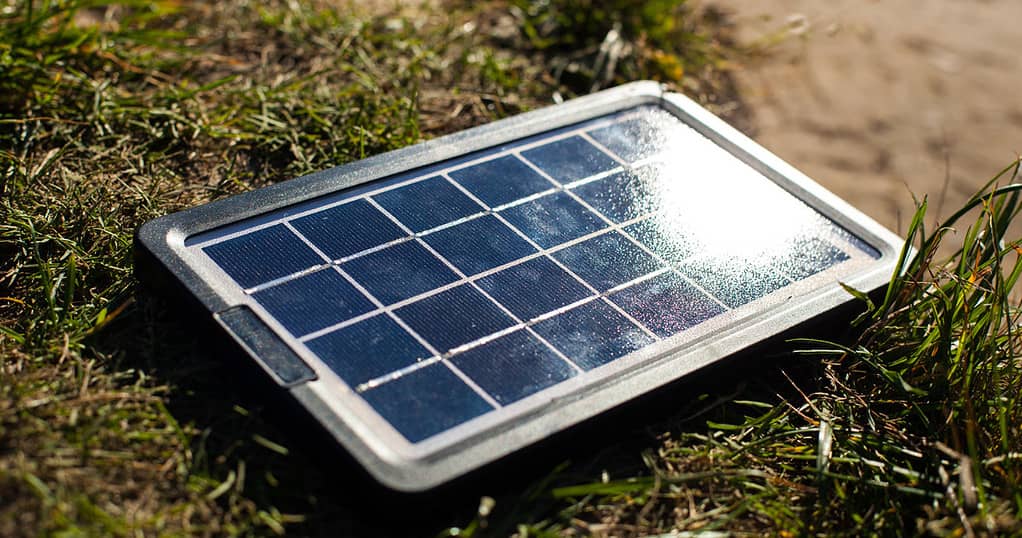
15. bear spray
Bear spray is an essential item for anyone venturing into bear country. This repellent uses capsaicin, found in cayenne peppers, which irritates bears' eyes, noses, and throats, causing them to flee.
It comes in a canister that can be easily carried on a belt or backpack and quickly deployed when necessary; some models even reach up to 30 feet away!
Studies have proven survival bear spray is more effective than firearms at preventing bear attacks, making it invaluable to outdoor adventurers and hikers.
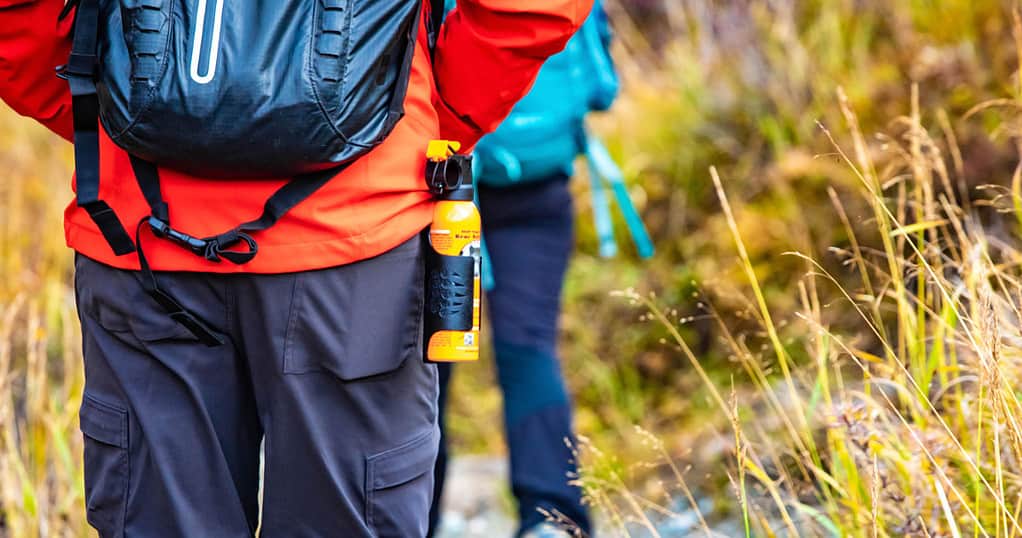
Conclusion
Essential survival items are crucial to short-term and long-term survival in emergencies.
From food and water supplies to shelter, clothing, and first-aid, these items can make all the difference between life and death. While the necessary items may vary depending on location and circumstances, it is always beneficial to be prepared with basic survival knowledge, skills, and resources.
Individuals can increase their chances of surviving emergencies and disasters by understanding what items are necessary and why they are essential.
Moreover, it is crucial to practice safety measures and take steps to prevent crises from happening in the first place.
With proper preparation and knowledge, individuals can be ready for anything and increase their chances of surviving the unexpected.
